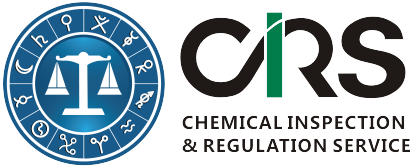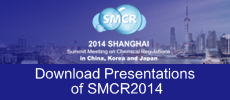The Latest Updates on GHS Regulations in Southeast Asia
Original Article by Cloris Pan from CIRS
Nowadays, more and more Southeast Asian nations brought Globally Harmonized System of Classification and Labeling of Chemicals (GHS) in their chemical administration, therefore, manufacturers and importers of hazardous chemicals in those areas should gradually realize the importance of how to comply with GHS regulations. So far, countries like Indonesia, Malaysia, the Philippines, Singapore, Thailand and Vietnam have successively issued relevant regulations and guidance documents with a transition period. In the Shanghai Summit Meeting on Chemical Regulations in China, Korea, and Japan, Dr. Majahar Bin Abd Rahman from Malaysian Department of Health and Safety, gave a specific introduction on GHS in Malaysia. Besides, Cloris Pan, the project manager of GHS team in Hangzhou CIRS Co,. ltd, also made a presentation on the latest updates of GHS in whole Southeast Asian Regions.
The Ministry of Industry in Indonesia published a regulation, No.23/M-IND/PER/4/2013 on April 12, 2013, which made a series of updates in their domestic chemical classification system. Meantime, this regulation requires that every stakeholders who produce chemicals substance is obliged to determine the classification, to tag the hazard label onto the package and to compile SDS. For substances, this regulation came into force immediately, while for mixtures, the deadline of classifying and preparing relevant files is December 31, 2016. Indonesian government requires that SDS should be reviewed every 5 years even if no information needs to be updated.
Malaysian Department of Health and Safety (DOHS) published Occupational Safety and Health (Classification, Labeling, and Safety Data Sheet for Hazardous Chemicals) Regulation (CLASS 2013) last year. This regulation requires producers and importers of chemicals to make up-to-standard SDS. Furthermore, all corporations in Malaysia have to submit their products inventory of next year to DOHS online. Industry Code of Practice (on chemical classification and hazard communication) (ICOP 2014) was published by Malaysia government, in which contains a mandatory harmonized classification inventory (Annex I), specific principle and procedures for classifying and detailed requirements for SDS authoring. The substance classification inventory in ICOP 2014 is the basis of all classification, that is, classification in SDS cannot be briefer. This regulation will take effect for mixtures on April 17, 2015. Language in SDS and labels should be both English and Malaysian.
(The 3rd Draft) Rules and Producers for SDS, Labeling Requirements and Hazardous Classification has been published by the Philippines in 2011. March 6th this year, the ministry of trade issued the Guideline for the Implementation of Globally Harmonized System in Chemical Safety Program in the Workplace, aiming at ensuring the safety in relevant workplace. The transitional period of this regulation is 1 year.
Singapore updated and republished GHS standard SS 586: 2014 on March 7th. Based on the old SS 586: 2008, the newer version updated according to 4th revised edition of UN GHS; it has already come into force for substances. For mixture, the transaction period will expire by July 1st 2015. The language barrier is relatively small since Singapore and Philippine can both use English files. It has been required in Singapore that each enterprise has to review the product SDS once every 5 years.
The “Notification of Ministry of Industry Re: Hazard Classification and Communication System for Hazardous Substances B.E. 2555 (“GHS”)” that published by Ministry of Industry of Thailand has already been in force since March 13th 2012, and it has not been officially updated in the recent two years. The transition period for the substances has expired. For the mixture, the transition period will expire in March 2017. Regarding the language, there is no language requirement provision stated explicitly. However, it is common industry practice to provide them in Thai.
Ministry of Industry and Energy of Vietnam has published two GHS Circular related order files in 2010 and 2012, which were all based on the 3rd revised edition of UN GHS. Vietnam has officially required the chemical enterprises to provide both label and SDS. So far, the SDSs all over the world are basically the same as the United Nation GHS version, which is required to include 16 sections. The Vietnamese SDS also includes 16 parts; however the 2nd and 3rd sections are reversed. Typically, the 2nd part should be the GHS classification of the products and the 3rd part should be the ingredient information of the products. The Vietnamese SDS, however, puts the ingredient information in the 2nd part and the GHS classification in the 3rd part. In the aspect of language, Vietnam requires that both SDS and label should be in Vietnamese. Other language can also appear simultaneously but in smaller font size.
Even though the GHS regulation of each country is composed based on the UN purple book, the version of the UN GHS that adopted by each country is somehow not totally identical. A certain product may be in different classifications in various countries. Moreover, the authorities of each country have more or less added specific requirements to the original UN GHS, for example, the time requirement for the SDS and label inspection, the language requirement and etc. Some countries even require the enterprises to put a domestic 24 hour emergency phone number on their SDS. Those requirements have increased the difficulties for the enterprises to get compliance with the GHS standard of different countries. CIRS advices that, all the enterprises should strictly comply with the laws and standards of your targeted country, and should take a full consideration on the requirements that are announced by administrative authorities of different countries when preparing the SDS and label.
Contact Us
- CIRS China
Hangzhou CIRS Co. Ltd (CIRS China)
11F Building 1, Dongguan Hi-Tech Park, 288 Qiuyi Road, Binjiang District, Hangzhou 310052, China
Tel: +86-571 8720 6555 | Fax: +86-571 8720 6533
Email: service@cirs-reach.com

